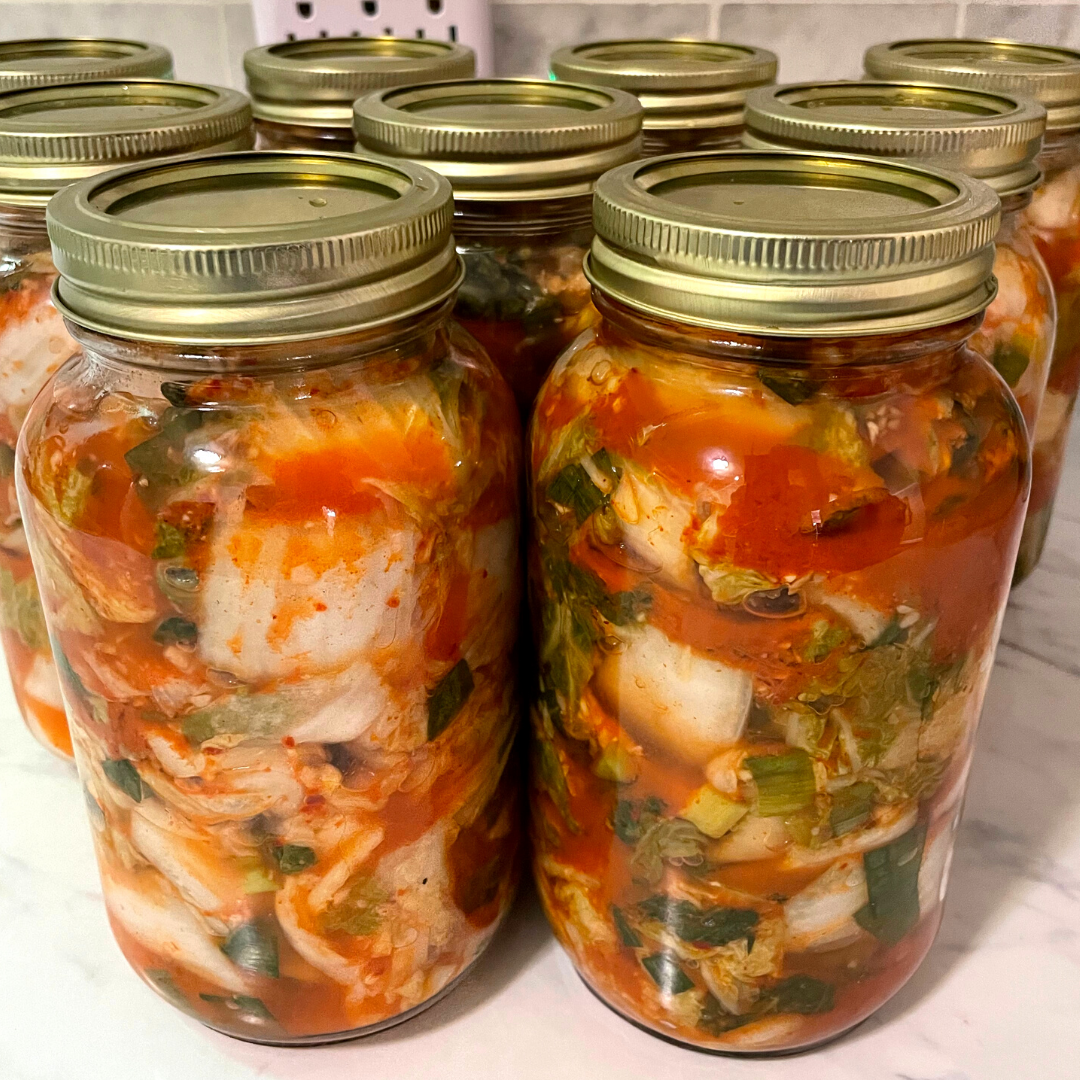We've always enjoyed growing Napa cabbage, also known as Chinese cabbage, in our gardens during the cooler months. But until recently, we had always just cooked it with sausage much like we do standard cabbage. The leaves on Napa cabbage are much tender, and so they cook fast. This also makes it a great addition to stir fries when cut into slender pieces.
Last year we started experimenting and making kimchi with our Napa cabbage. Learning how to make kimchi can be quite intimidating if you search online, because there are so many variations and so many different recipes. Our recipe below is probably not the most "authentic" version you'll find, but it's the best combination of ingredients that we've found that we like.
We call this "Not So Funky Kimchi" because our recipe omits the fish sauce that is used in most kimchi recipes. Fish sauce is not something that is commonly found in American recipes. As a result, the funky smell and taste of it may not agree with your taste buds. So we like our kimchi a little less funky, without the fish sauce. This is a great way to preserve your extra Napa cabbage and we hope you enjoy it as much as we do!

INGREDIENTS:
- 4 Heads of Napa (aka Chinese) Cabbage
- 1 Cup Canning or Pickling Salt
- 2 Large Bunches of Green Onions
- 1 7.5 oz Bottle Gochujang Korean Chili Sauce
- 1/2 Cup Minced Garlic
- 1/2 Cup Minced Ginger
- 1 Cup Rice Vinegar
- 2 Tablespoons Korean Pepper Flakes

DIRECTIONS:
1) Quarter the heads of Napa cabbage, then slice into approximately 2" square pieces. Once cut, rinse thoroughly in a sink full of water to ensure that no insects or dirt are on the cabbage pieces.
2) In a large mixing bowl, layer the cut cabbage and salt. Start with a layer of cabbage in the bottom of the bowl, then add a heavy sprinkling of salt. Add another layer of cabbage and another heavy sprinkling of salt. Continue doing this until all the cabbage has been layered with salt.
3) Allow the salted cabbage to sit for several hours. Depending on the water content of the cabbage and the amount of salt used per layer, the timing can vary. Over time, the salt will begin to wilt the cabbage. You want the cabbage to be soft and wilted before moving to the next step. Sometimes this takes 2-3 hours, sometimes you can leave it for 6-8 hours. Mixing the cabbage in the bowl every few hours does seem to help speed the process a little.
4) Once the cabbage is soft and wilted, place the cabbage in a colander and rinse with cold water. This will help to remove some of the salt and will keep your finished product from being too salty. Drain the cabbage well after rinsing and add it back to a large mixing bowl.
5) Chop the green onions end to end and add them to the bowl. We've found that there's no such thing as too many green onions in a kimchi recipe. So if you have extra green onions that you can use, feel free to add more.
6) Add the minced garlic, minced ginger, and rice vinegar to the bowl and mix thoroughly with your hands.
7) Add the Korean chili paste and pepper flakes a little at a time, mixing as you add. If you're not a fan of the heat, you may only want to add a little for flavor. If you like the heat, you may want to add more than is recommended in the ingredients list above. This is all personal preference here. Add a little at a time until you get the heat how you like it.
8) Cover the mixture with saran wrap, pressing the wrap firmly onto the kimchi so that no air is between the kimchi and the saran wrap. Lay a dark towel over the bowl and let it set and ferment for 2-3 days inside your home.
9) After 2-3 days, ladle the cabbage into jars. We like to fill all the jars with the solids first, then add the remaining liquid in the bowl to "top-off" the jars. You'll want all the contents of the jar surrounded by the juices from the fermentation process.
10) Place lids and bands on the jars and put them in the fridge until you're ready to enjoy the kimchi. These don't have to be preserved through a water bath canning technique because the contents have been preserved through the fermentation process. They'll keep for months in the fridge so you can use them whenever you'd like.

